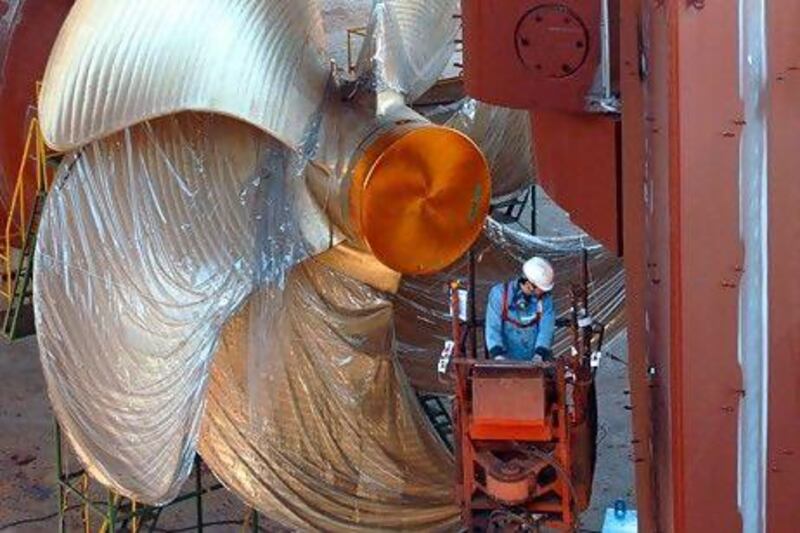"Mr O, what industry should we develop to reach the US$10 billion export mark?" During a cup of coffee one day in 1972, Park Chung-hee, South Korea's president, directed this question at O Won-chol, his senior adviser.
Yet only a month earlier Mr Park had set the export goal at $5.5bn by 1980. Why was he suddenly asking about $10bn? Caught by surprise, Mr O nevertheless responded: "I think the time has come to develop the heavy and chemical industry, Mr President". The early 1960s marked the beginning of rapid expansion of South Korean exports.By the 1970s, the labour-intensive, light manufacturing industry had matured and exports of such products were achieving new highs.
In spite of this, Mr Park was aware that the country had to advance beyond light industries to sustain the development momentum. Furthermore, conditions such as the increasing threat of North Korea and the competition in light industries from other developing countries all seemed to point to one direction - the development of the heavy and chemical industry (HCI).
However, there was a major setback in pursuing HCI. South Korea had a small domestic market unable to accommodate this industry. Lack of capital, natural resources and technology were also barriers that had to be overcome.
The government's strategic choice, then, was to integrate the country into the world market, thereby attracting capital and technology, and exploring markets for the HCI. Until then, Korea's trade orientation was only halfway complete. The government continued protectionist policies, strictly controlling imports through the placement of heavy tariffs and quantitative restrictions. There were also interventions in the exchange rate. While protectionist measures were helpful in supporting the development of the HCI, excessive protectionism soon led to problems such as misallocation of resources and excess production capacity.
By 1979, a stable base for the HCI was created and the government shifted focus to boosting the nation's competitiveness through the creation of a market-driven and open economy.
By adopting gradual tariff reductions and introducing foreign direct investment (FDI), Seoul made efforts for liberalisation.
Yet the institutional basis for liberalisation was weak. For example, the government had little financial supervisory function. Private companies were not prepared for competition as they had been receiving state support and protection, resulting in debt accumulation and less focus on effectiveness.
Furthermore, the government still held tight control over FDI to maintain favourable export conditions. Nevertheless, Seoul continued to pursue an open economy.
Remedies were provided to problems arising from the institutional unpreparedness. Also, South Korea was fortunate that in the mid-1980s it experienced a period of "three lows" - a low value of its currency, low international interest rates and low oil prices. Such a favourable environment helped in the HCI drive despite difficulties resulting from rapid structural changes in industrial structure.
The HCI promotion efforts continued when the government announced a new five-year economic plan in 1993, reflecting new goals such as the internationalisation and liberalisation of the economy, active participation in the new international trade order such as the World Trade Organization, qualitative improvements in export products and the facilitation of technology transfer through FDI.
Amid the rapid changes, pressure built up and the country was in a fragile state when the Asian financial crisis struck in 1997.
The reckless management of the financial sector, problems of corruption arising from close ties between the government and businesses, and the belief that business groups, or chaebols, were "too big to fail", resulted in the failure to establish a fair and transparent economic system.
In the end, the crisis proved useful in accelerating the liberalisation of the economy. Many people now refer to the crisis as a blessing in disguise, through which major reforms necessary for growth were carried out in the public, corporate, labour and financial sectors.
The civic consciousness of South Koreans also played a great role.
The "gold collection campaign" was initiated to allow citizens to contribute their gold jewellery to the national reserve. Thousands of people stood in line, bringing with them gold rings, necklaces and watches. Within three months, gold amounting to more than 200 tonnes had been voluntarily collected, which was then used to help to pay off the national debt. Whereas citizens in other countries threw rocks at their governments in similar situations, South Koreans chose to work with theirs, which created a tight sense of social cohesion.
Having successfully overcome the crisis, the country is today highly intertwined with the global economy. South Korea's external dependency ratio - the value of exports and imports against gross national income - reached a high of 113.2 per cent last year. The nation's foreign reserves, as low as US$8.7bn during the Asian financial crisis, now amounts to more than $314bn.
A healthy and open market mechanism is firmly rooted, whereas the government's role is more market-oriented and restricted to providing macroeconomic stability, preparing better economic environments and promoting innovation and new engines of growth.
Going through the difficulties, South Korea has consistently carried out liberalisation, which now constitutes a solid base for a strong economy.Through such efforts, the nation's credit rating has consistently improved. Recently, in the midst of the global financial crisis, Standard & Poor's upgraded South Korea's sovereign credit rating to A+, the agency's fifth-highest grade.
Hyun Oh-seok is the president of the Korea Development Institute. This is the fourth of a six-part series on the South Korean economy





